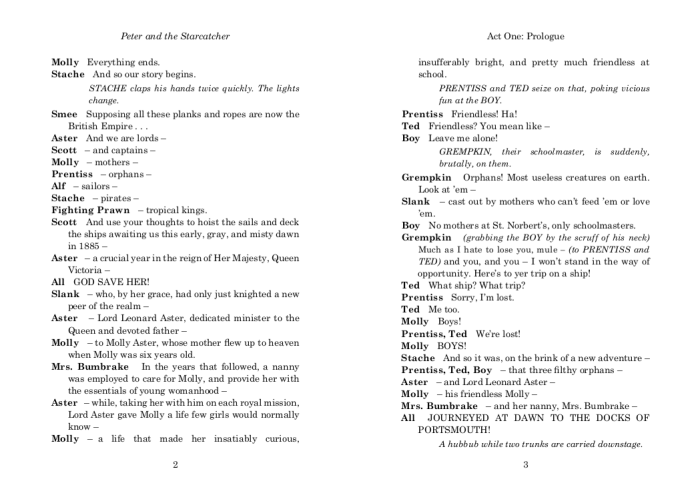Monologue peter and the starcatcher – The monologue in “Peter and the Starcatcher” serves as a pivotal moment in the play, revealing the character’s motivations, emotions, and foreshadowing their future adventures.
This monologue plays a crucial role in shaping the character of Peter Pan and provides insights into the origins and development of this beloved character.
Peter and the Starcatcher Monologue Analysis
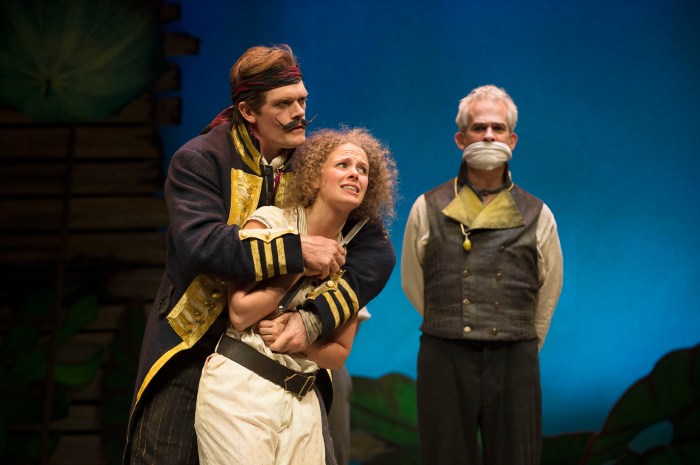
Peter and the Starcatcher is a Tony Award-winning play that tells the origin story of Peter Pan. The play features a monologue by Peter that is significant in the context of the play.
Character’s Motivations and Emotions
In the monologue, Peter reveals his motivations and emotions. He is a lost boy who is searching for a place to belong. He is also struggling with his identity and his place in the world. The monologue reveals Peter’s vulnerability and his longing for connection.
Use of Language and Imagery
The monologue is written in a lyrical and poetic style. Peter uses vivid imagery and metaphors to describe his experiences. The language of the monologue reflects Peter’s childlike innocence and his imaginative nature.
Peter Pan’s Origins and Development
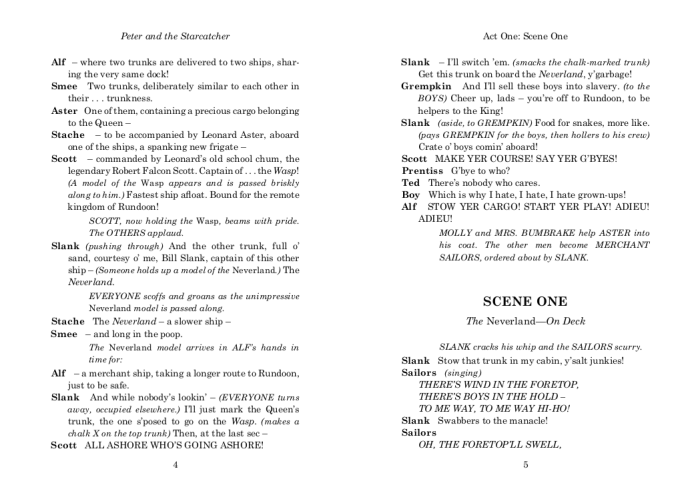
Peter Pan’s origins can be traced back to a monologue written by J.M. Barrie in 1904. This monologue, entitled “Peter Pan, or The Boy Who Wouldn’t Grow Up,” introduced the world to the character of Peter Pan, a mischievous and adventurous boy who lived on the island of Neverland.
The monologue was a huge success, and Barrie later expanded it into a full-length play, which premiered in 1904. The play was also a critical and commercial success, and it helped to establish Peter Pan as one of the most beloved characters in children’s literature.
The Influence of the Monologue on Peter’s Personality and Backstory
The monologue played a significant role in the development of Peter Pan’s personality and backstory. In the monologue, Barrie describes Peter as a “gay and innocent and heartless” boy who is “wild and unsympathetic to pain.” He also reveals that Peter has been living on Neverland for many years, and that he has never grown up.
These details helped to shape Peter’s personality and backstory, and they have been carried over into all subsequent adaptations of the character. In the play, Peter is depicted as a mischievous and carefree boy who is always looking for adventure.
He is also shown to be loyal to his friends, and he is always willing to fight for what he believes in.
How the Monologue Foreshadows Peter’s Future Adventures
The monologue also foreshadows Peter’s future adventures. In the monologue, Peter mentions that he has been to many different places, and that he has had many different adventures. He also mentions that he is always looking for new challenges.
These details foreshadow Peter’s future adventures, which are chronicled in the play and in subsequent adaptations. In the play, Peter travels to London with Wendy Darling and her brothers, and he has many adventures there. He also travels to the Lost Boys’ camp, and he helps them to fight against Captain Hook.
Theatrical Techniques and Staging
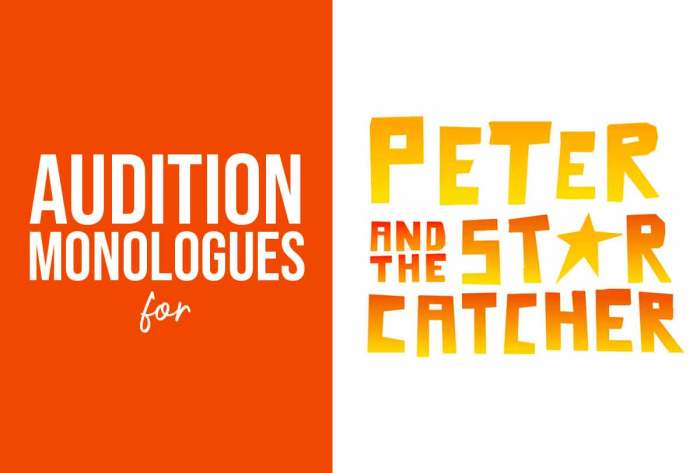
The monologue in Peter and the Starcatcherutilizes various theatrical techniques to convey the emotional journey of the character. These techniques include lighting, sound, and movement, which work together to enhance the emotional impact of the monologue.
Lighting
The lighting in the monologue plays a crucial role in creating the atmosphere and conveying the character’s emotions. The use of warm, golden light during the beginning of the monologue establishes a sense of nostalgia and longing. As the monologue progresses and the character delves into their memories, the lighting gradually shifts to cooler, blue tones, reflecting the character’s growing sadness and regret.
Sound
The sound design in the monologue is equally important in creating an immersive experience. The use of subtle sound effects, such as the sound of waves crashing or birds chirping, helps to establish the setting and transport the audience to the character’s world.
The incorporation of music, particularly during the more emotional moments of the monologue, heightens the emotional impact and allows the audience to connect with the character’s inner turmoil.
Movement
The character’s movement during the monologue is carefully choreographed to convey their emotional state. The use of slow, deliberate movements during the more introspective moments creates a sense of vulnerability and intimacy. In contrast, the use of more energetic and expressive movements during the more passionate moments of the monologue conveys the character’s inner turmoil and the intensity of their emotions.
Audience Engagement, Monologue peter and the starcatcher
The monologue in Peter and the Starcatcheris designed to engage the audience on an emotional level. The use of direct address, where the character speaks directly to the audience, creates a sense of intimacy and connection. The character’s vulnerability and openness allow the audience to empathize with their experiences and journey.
Adaptations and Interpretations
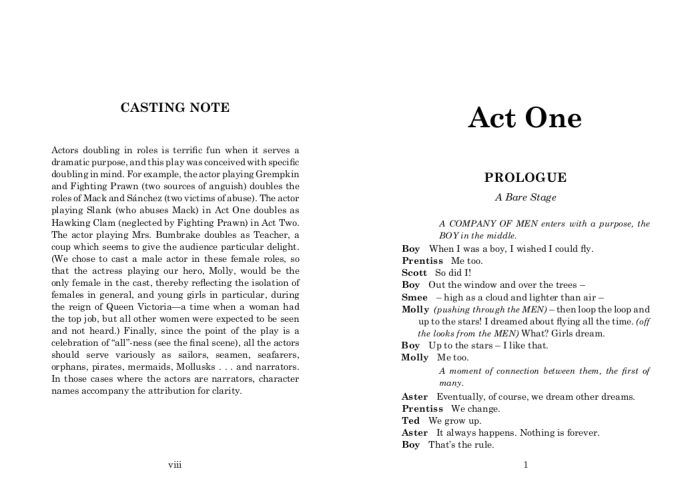
The monologue from Peter and the Starcatcherhas been adapted and interpreted in various forms, including film, television, and stage productions. Each adaptation has brought unique perspectives and interpretations to the text, influencing its meaning and impact.
Film Adaptations
The 2003 film adaptation of Peter Pan, directed by P.J. Hogan, included a version of the monologue delivered by Jeremy Sumpter as Peter Pan. This adaptation emphasized the character’s innocence and wonder, capturing the childlike spirit of the original text.
Television Adaptations
The 2012 television miniseries Neverland, starring Charlie Rowe as Peter Pan, featured a monologue that explored the character’s darker side. This interpretation highlighted the complexities of Peter’s character, balancing his mischievous nature with his vulnerability.
Stage Productions
Numerous stage productions of Peter and the Starcatcherhave presented diverse interpretations of the monologue. The 2012 Broadway production, directed by Roger Rees and Alex Timbers, emphasized the playfulness and humor of the text. In contrast, the 2019 London production, directed by Jonathan Munby, focused on the emotional depth and poignancy of the monologue.
Thematic Interpretations
The monologue has been used to convey various themes and messages. In some adaptations, it has been interpreted as a celebration of childhood innocence and imagination. In others, it has been used to explore themes of identity, loss, and the power of belief.
Cultural Impact and Legacy: Monologue Peter And The Starcatcher
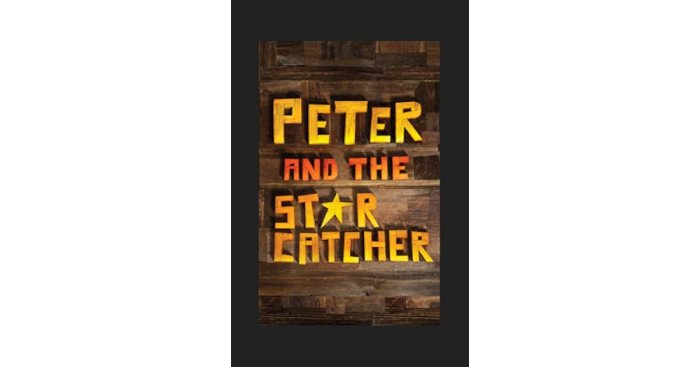
Peter and the Starcatcher’s monologue has left an indelible mark on the cultural landscape, inspiring countless works of art, music, and literature.
Literary Impact
The monologue’s exploration of identity, loss, and adventure has resonated with readers and writers alike. It has been referenced and adapted in numerous novels, plays, and short stories, including Neil Gaiman’s “Stardust” and Jodi Picoult’s “My Sister’s Keeper.”
Theatrical Impact
The monologue has had a profound impact on theater. Its innovative staging and use of physicality have influenced a generation of actors and directors. It has been performed countless times around the world, receiving critical acclaim and inspiring new theatrical productions.
Popular Culture Impact
The monologue has also entered the realm of popular culture. Its iconic phrases and characters have been referenced in movies, television shows, and even video games. It has become a touchstone for generations of fans who continue to be inspired by its themes of hope, resilience, and the power of imagination.
Enduring Legacy
Peter and the Starcatcher’s monologue continues to captivate audiences today. Its timeless themes and innovative storytelling make it a work of enduring relevance. It serves as a reminder of the importance of imagination, the power of perseverance, and the enduring magic of childhood.
FAQ Summary
What is the significance of the monologue in “Peter and the Starcatcher”?
The monologue reveals Peter’s motivations, emotions, and foreshadows his future adventures.
How does the monologue contribute to the development of Peter Pan’s character?
The monologue provides insights into Peter’s origins and personality, shaping his characterization.
What theatrical techniques are employed in the monologue?
The monologue utilizes lighting, sound, and movement to enhance its emotional impact.
